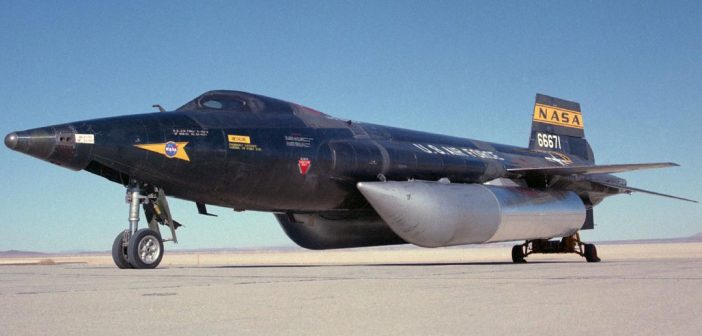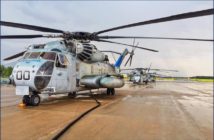On Dec 14, 2017, the Grampaw Pettibone Squadron welcomed back as its guest speaker, Michelle Evans. Our speaker is the author of The X-15 Rocket Plane, Flying the First Wings Into Space. The presentation was about USA Major Michael J. Adams, the twelfth and final pilot selected in the X-15 flight test program.
Our speaker read excerpts from a chapter about Major Adams in her book, his life and role as a test pilot in the X-15 program. Long before Major Adams became a pilot and flew the X-15, his character and motivation was shaped by his childhood years. Born 5 May, 1930 and growing up near Sacramento, California, Mike Adams grew to love the outdoors. Working in a local hardware store, developing a life-long love for shooting and hunting, working on cars and acting in plays became the foundation for shaping the man.
After graduating high school, Mike entered and completed his Associate degree from Sacramento City College. Shortly after graduating he received notice from the US Army, but enlisted in the US Air Force instead. He completed basic, applied for OCS and completed pilot training on 25 October 1952. 1Lt Adam’s first assignment after training was in April 1953 to an F-86 squadron in Korea, where he flew 49 missions earning an Air Medal. Upon completing his tour in Korea he was assigned in February 1954 to England Air Force Base, Louisiana and stationed for almost 3 years.
During his tour in Louisiana he met his future wife Frieda Beard, whom he married in January 1955. Shortly after he married, Mike was sent to Germany for a 6 month tour. Upon returning and after reuniting with his new wife, he focused on his Air Force career and continued his studies Mike entered the University of Oklahoma and completed his BS degree in 1958 in Aeronautical Engineering. After completing his undergraduate degree, Mike went on for graduate work in Astronautics at MIT. Upon completing his advanced studies 18 months later he was assigned to Chanute Air Force base in Illinois as a flight instructor. He was also selected as a student at the USAF Test Pilot School at Edwards AFB. Coincident with his duty assignment in Germany and during his studies, Mike’s family grew and by the time he completed his graduate studies; in addition to his wife, he had 3 sons.
Captain Adams graduated from Test Pilot School in 1962 as the outstanding student and pilot in his class. For this he was awarded the Honts Trophy. He was then selected to attend the Aerospace Research Pilot School, known as ARPS and graduated with honors in class 4, December 1963. Along with his classmate Dave Scott, Captain Adams applied for selection in the fledgling Astronaut program, travelling to Brooks AFB for testing. Upon returning to Edwards AFB, their F- 104 fighter experienced an engine failure and Captain Adams ejected injuring himself during the process. Had he stayed with the plane, he would have been killed. Dave Scott did remain with the aircraft and survived the crash. Dave Scott did go on to join the astronaut program in Gemini 8 and Apollo 15. However, due to the injuries sustained in the crash, Captain Adams did not join the scheduled astronaut program at that time.
In November 1965, Mike was selected to be an astronaut in the USAF Manned Orbital Laboratory (MOL) program. Due to program administrative and technical delays, in July 1966, Major Adams joined the X-15 program and made his first flight at Edwards AFB on 6 October 1966 in plane 001. There were a total of 3 aircraft in the program. Between October, 1966 and November, 1967, Major Mike Adams flew a total of 7 flights. A few cut short due to early engine shut down or faulty start. One flight achieved a top speed of Mach 5.59. Even while participating in the X-15 program, Major Adams was still looking at opportunities in the space
Though the Major was involved with flight test, he still provided time for his family and shared his enjoyment of the outdoors in the area surrounding Edwards, travelling to the local deserts and mountain, to explore and enjoy what was offered. Major Adams final flight on 15 November, 1967 in aircraft 003 – tail number 66672 launched at 9:15 AM. At 10:30:07, Major Adams released from the B-52 and throttled up to 100% thrust. The aircraft for the flight was equipped with 2- 6 foot pods at the end of each wing, one to collect data on micro meteorites and the other to take solar spectrum readings. The right pod configuration contained a probe that had not been tested in an altitude chamber to determine it’s impact on aircraft performance in a vacuum. During the flight, the probe began to arc causing electrical malfunctions on a number of onboard control systems. Distracted from the flight, Major Adams attempted to reset the instruments. Among the instruments manually set was a dual purpose display that read Yaw or Roll. Distracted, the Major set and misread the display as Yaw when instead it was switched to Roll. Peak altitude was 266,000 feet(50.3 miles) and due to the aircraft Yaw, heading was off by 18 degree to the right of flight path. Instrumentation in the Control Room on the ground did not include any monitoring of the flight path deviation. Upon heading back down, the Yaw increased to 28 degrees, 90 degrees and then a full 180 degrees. The aircraft was placed into a hypersonic spin, the first of its kind in the X-15. Coming out of the spin at 120,000 feet but in an inverted dive and experiencing severe oscillation, the aircraft continued to descend and at approximately 80,000 ft with a severe G-load of over 15 Gs began to break apart. Total separation occurred at 62,000 feet. At 10:35:20, Number 003 impacted the desert. Major Adams did not survive.
While the accident investigation concluded that Major Adams failed to interpret his heading indicator correctly, the addition of devices not fully tested which created the distraction leading to misreading the instruments was an added factor. The lack of heading indicators in the Control Room to aid the flight test team in assisting the pilot in any deviation from planned flight was also noted.
Our speaker’s research referred to team member attitudes and events of the X- 1 5 p r o g r am a n d subsequent Space Shuttle program, events that may have contributed to the losses in both programs. As a result of the altitude achieved above 50 miles on the flight, Major Mike Adams was posthumously awarded US Air Force Astronaut Wings.




